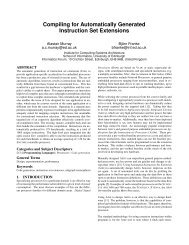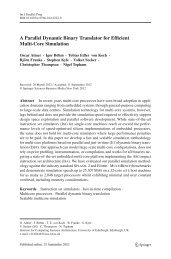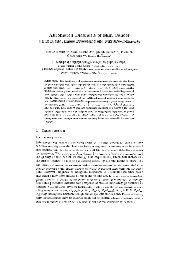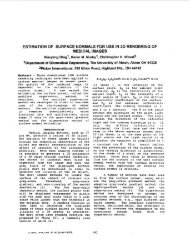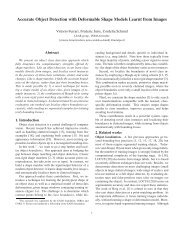WebExp2 Experimenter's Manual - School of Informatics - University ...
WebExp2 Experimenter's Manual - School of Informatics - University ...
WebExp2 Experimenter's Manual - School of Informatics - University ...
You also want an ePaper? Increase the reach of your titles
YUMPU automatically turns print PDFs into web optimized ePapers that Google loves.
8 Results and their interpretation<br />
Once you have collected results from your experiments, you will want to access and transform/summarise these<br />
results in some way. This section describes the format the results take and how to process them usefully.<br />
You have three files for each successfully completed experiment, each in a separate directory:<br />
log in a simple text format; this can be consulted to give insight into any problems that may appear in the<br />
experimental results<br />
subject an XML file describing the subject who completed the experiment<br />
results an XML file describing the experimental sequence that was administered, and the results that were<br />
collected<br />
Note that each file has the same name, constructed from the id name <strong>of</strong> the experiment (the prefix), and an<br />
iteration number (the suffix). The files have different extensions however; logs have the extension .log while<br />
other results files are in XML format and therefore have the extension .xml. Thus it is easy to select matching<br />
records for a particular experiment, from the logs, subjects and results directories.<br />
8.1 Guide to the Subject file<br />
This section describes the subject results file. Here is a sample subject file:<br />
Figure 26: An experiment configuration record.<br />
<br />
<br />
<br />
129.215.218.200<br />
Linux 2.4.20-31.9 v1 dice 1smp i386<br />
1.4.2 06<br />
Sun Microsystems Inc.<br />
Mozilla/5.0 (X11; U; Linux i686; en-US; rv:1.7.5)<br />
Gecko/20041215 Firefox/1.0<br />
<br />
The browser string is taken from the ‘User Agent String’ which a browser provides when viewing your pages.<br />
Note that browsers are not required to provide correct information in this string and some browsers (e.g. Safari)<br />
actually identify themselves as something else. Unfortunately there is no way around this.<br />
You will most likely come across Safari (on Apple computers), Mozilla, Firefox, MSIE, Opera, Konqueror or<br />
Netscape.<br />
Many browsers have evolved from older browsers, whose names still appear in the browser string for compatibility.<br />
For example, Mozilla is the base for Firefox and Netscape, and Gecko is the original base for Mozilla.<br />
For more information about browser identification strings, please view the useful resource http://<br />
javascriptkit.com/jsref/navigator.shtml — the section ‘Additional browsers’ Navigator Information’<br />
shows the kind <strong>of</strong> strings you will get for different browsers. The page at http://www.pgts.com.au/pgtsj/<br />
pgtsj0208b.html provides a good discussion <strong>of</strong> the problems in browser identification and how they arose.<br />
51



